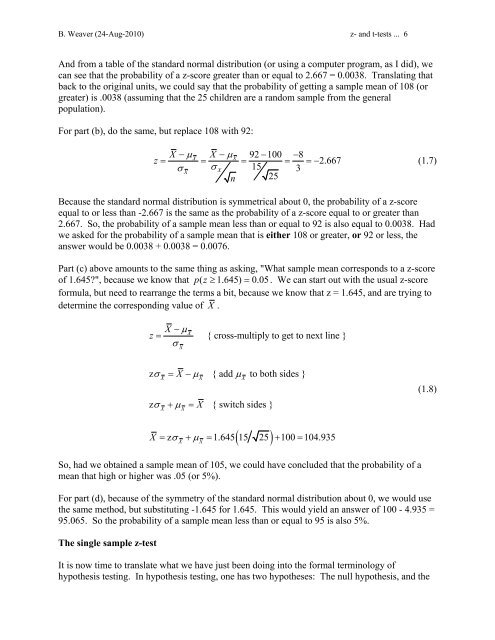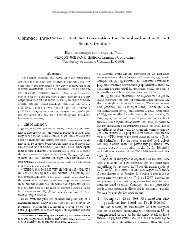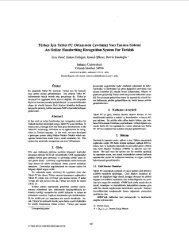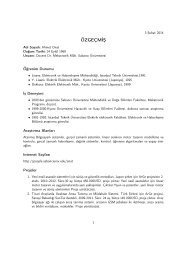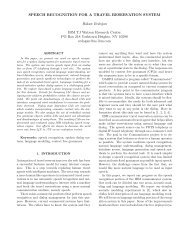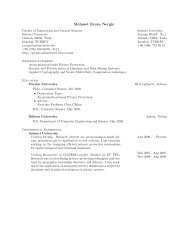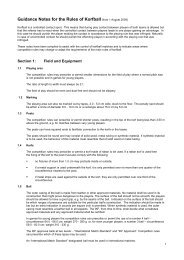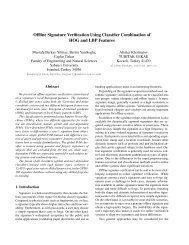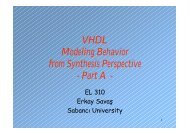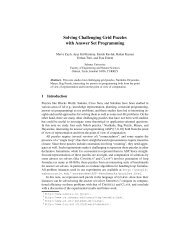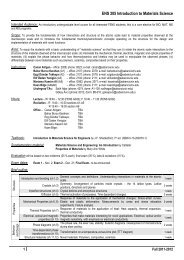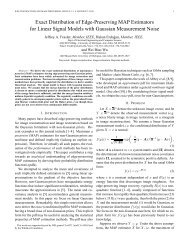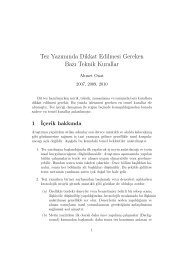Hypothesis Testing Using z- and t-tests In hypothesis testing, one ...
Hypothesis Testing Using z- and t-tests In hypothesis testing, one ...
Hypothesis Testing Using z- and t-tests In hypothesis testing, one ...
You also want an ePaper? Increase the reach of your titles
YUMPU automatically turns print PDFs into web optimized ePapers that Google loves.
B. Weaver (24-Aug-2010) z- <strong>and</strong> t-<strong>tests</strong> ... 6And from a table of the st<strong>and</strong>ard normal distribution (or using a computer program, as I did), wecan see that the probability of a z-score greater than or equal to 2.667 = 0.0038. Translating thatback to the original units, we could say that the probability of getting a sample mean of 108 (orgreater) is .0038 (assuming that the 25 children are a r<strong>and</strong>om sample from the generalpopulation).For part (b), do the same, but replace 108 with 92:X −µ X −µXX92 −100 −8z = = = = = − 2.667(1.7)σ σX15 3Xn 25Because the st<strong>and</strong>ard normal distribution is symmetrical about 0, the probability of a z-scoreequal to or less than -2.667 is the same as the probability of a z-score equal to or greater than2.667. So, the probability of a sample mean less than or equal to 92 is also equal to 0.0038. Hadwe asked for the probability of a sample mean that is either 108 or greater, or 92 or less, theanswer would be 0.0038 + 0.0038 = 0.0076.Part (c) above amounts to the same thing as asking, "What sample mean corresponds to a z-scoreof 1.645?", because we know that pz≥ ( 1.645) = 0.05. We can start out with the usual z-scoreformula, but need to rearrange the terms a bit, because we know that z = 1.645, <strong>and</strong> are trying todetermine the corresponding value of X .z =X − µσXX{ cross-multiply to get to next line }z σ = X −µ { add µ to both sides }X X Xz σ + µ = X { switch sides }XX(1.8)X( )= zσ + µ = 1.645 15 25 + 100 = 104.935XXSo, had we obtained a sample mean of 105, we could have concluded that the probability of amean that high or higher was .05 (or 5%).For part (d), because of the symmetry of the st<strong>and</strong>ard normal distribution about 0, we would usethe same method, but substituting -1.645 for 1.645. This would yield an answer of 100 - 4.935 =95.065. So the probability of a sample mean less than or equal to 95 is also 5%.The single sample z-testIt is now time to translate what we have just been doing into the formal terminology of<strong>hypothesis</strong> <strong>testing</strong>. <strong>In</strong> <strong>hypothesis</strong> <strong>testing</strong>, <strong>one</strong> has two hypotheses: The null <strong>hypothesis</strong>, <strong>and</strong> the


